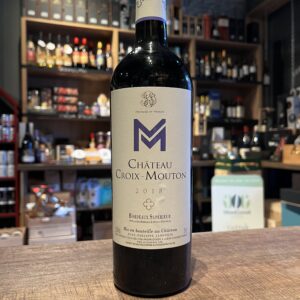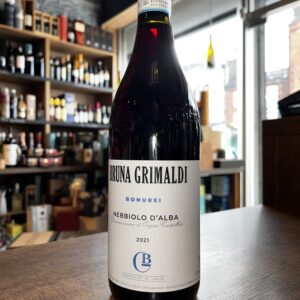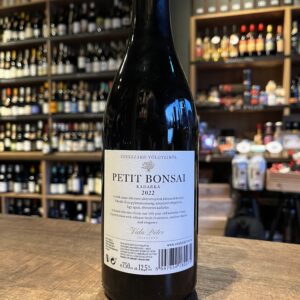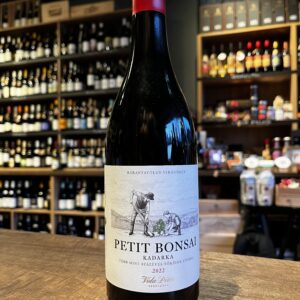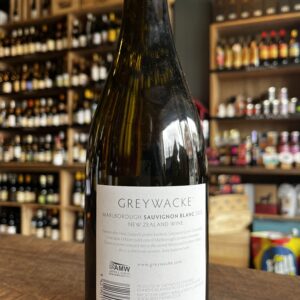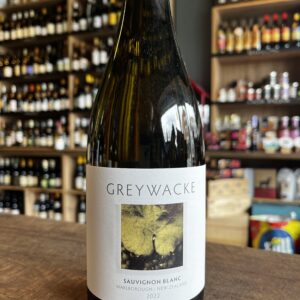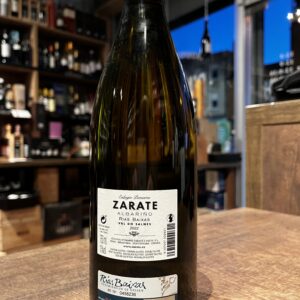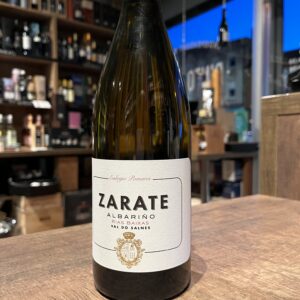-

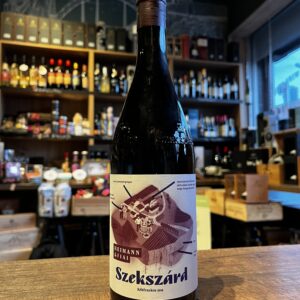 "I don’t think there is a better description for this wine than vin de soif. A wine that really does make you thirsty for the next sip! (The next glass!) It has the quiet charcuterie-like meatiness of Cinsault on the nose along with woodsy florals and tomato vine. It tastes of bramble berries picked from late-summer hedgerows, warm from the sun but with the leafiness and fragrant earthiness of footpaths and damp grassy banks and wild herbs. So mouth-watering and so gentle." Tamlyn Currin, Jancis Robinson.com
"I don’t think there is a better description for this wine than vin de soif. A wine that really does make you thirsty for the next sip! (The next glass!) It has the quiet charcuterie-like meatiness of Cinsault on the nose along with woodsy florals and tomato vine. It tastes of bramble berries picked from late-summer hedgerows, warm from the sun but with the leafiness and fragrant earthiness of footpaths and damp grassy banks and wild herbs. So mouth-watering and so gentle." Tamlyn Currin, Jancis Robinson.com -
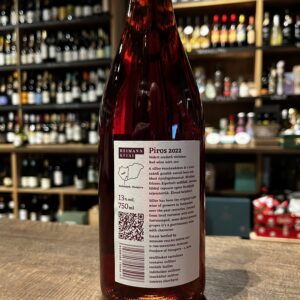
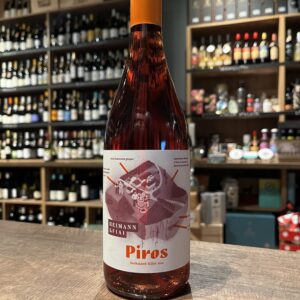 Siller has been the original table wine of growers in Szekszárd over the past centuries. Created from local varieties with some footstomped, some direct pressed grapes it’s a gastronomic wine with character. Fermented and aged in concrete. Stems add woodiness, but no barrels were used. Sagrantino gives a touch of grip, while Kékfrankos and Merlot add fruit, meatiness. Spicy, fresh, and chillable from Southern Hungary.
Siller has been the original table wine of growers in Szekszárd over the past centuries. Created from local varieties with some footstomped, some direct pressed grapes it’s a gastronomic wine with character. Fermented and aged in concrete. Stems add woodiness, but no barrels were used. Sagrantino gives a touch of grip, while Kékfrankos and Merlot add fruit, meatiness. Spicy, fresh, and chillable from Southern Hungary. -
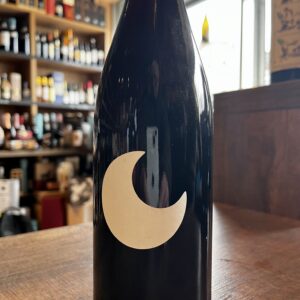
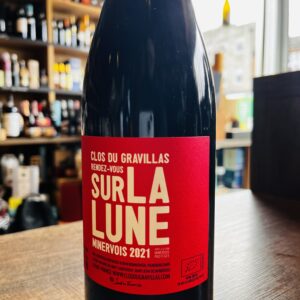 This Sur La Lune from Le Clos du Gravillas is a dazzling expanse of white limestone pebbles on a plateau at an altitude of 300 meters in the Haut Languedoc Natural Park. Between the gorges of St Chinian and Minerve, surrounded by scrubland and holm oaks, the 8.30 hectare estate is managed with respect for the terroir, in organic farming with concern for the preservation of the biodiversity of fauna and the surrounding flora. This wine comes from 3 plots on the Cazelles plateau: Syrah from a place called “Esperandieu”, a very pretty place surrounded by hills covered with scrubland, almond trees, broom and oaks where they also planted 48 pomegranate trees, 25 fig trees as well as cherry and apricot trees. The 80 year old vine of Carignan planted with Grenache from the place called Carretals and the 40-year-old Carignan vine from the place called Roque de Beau. Serve rather chilled but not too cold, ensuring that the wine does not heat up excessively in the bottle or in the glasses. A slight opening time prior to service may be beneficial.vThis wine beyond all the technicallities and sense of place it is a straight wine without organoleptic deviation, without volatile phenols, pure, with perfect control and ultimately delicious. Slainte!
This Sur La Lune from Le Clos du Gravillas is a dazzling expanse of white limestone pebbles on a plateau at an altitude of 300 meters in the Haut Languedoc Natural Park. Between the gorges of St Chinian and Minerve, surrounded by scrubland and holm oaks, the 8.30 hectare estate is managed with respect for the terroir, in organic farming with concern for the preservation of the biodiversity of fauna and the surrounding flora. This wine comes from 3 plots on the Cazelles plateau: Syrah from a place called “Esperandieu”, a very pretty place surrounded by hills covered with scrubland, almond trees, broom and oaks where they also planted 48 pomegranate trees, 25 fig trees as well as cherry and apricot trees. The 80 year old vine of Carignan planted with Grenache from the place called Carretals and the 40-year-old Carignan vine from the place called Roque de Beau. Serve rather chilled but not too cold, ensuring that the wine does not heat up excessively in the bottle or in the glasses. A slight opening time prior to service may be beneficial.vThis wine beyond all the technicallities and sense of place it is a straight wine without organoleptic deviation, without volatile phenols, pure, with perfect control and ultimately delicious. Slainte! -
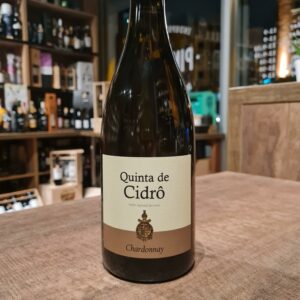 Quinta de Cidrô is located at São João da Pesqueira, which is one of the most highly regarded areas of Douro Valley. Throughout the last 20 years, Cidrô has been transformed into an experimental-model vineyard for the entire region. In virgin soils, cutting edge techniques were employed to plant 150 ha of the best varieties, creating one of the largest surfaces of single vineyard in the entire Douro Region. In the most privileged location, international varieties perform equally well as the local grapes. Chardonnay, Sauvignon Blanc, Viognier, Pinot Noir, and the adaptable Cabernet Sauvignon are some of the foreign varieties that here express their best qualities when vinified by the extensive winemaking know-how present at the Company. The Quinta de Cidrô Sauvignon Blanc was the second result of the ongoing experimentation-taking place at this vineyard.
Quinta de Cidrô is located at São João da Pesqueira, which is one of the most highly regarded areas of Douro Valley. Throughout the last 20 years, Cidrô has been transformed into an experimental-model vineyard for the entire region. In virgin soils, cutting edge techniques were employed to plant 150 ha of the best varieties, creating one of the largest surfaces of single vineyard in the entire Douro Region. In the most privileged location, international varieties perform equally well as the local grapes. Chardonnay, Sauvignon Blanc, Viognier, Pinot Noir, and the adaptable Cabernet Sauvignon are some of the foreign varieties that here express their best qualities when vinified by the extensive winemaking know-how present at the Company. The Quinta de Cidrô Sauvignon Blanc was the second result of the ongoing experimentation-taking place at this vineyard. -
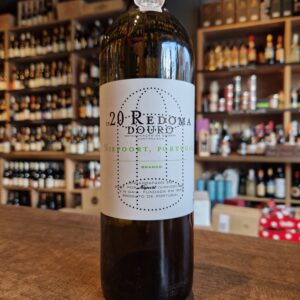 This oaky white will appeal to Graves or Burgundy lovers. The grapes used for the Redoma Branco originate from old vines growing on the right bank of the Douro River, at an altitude of between 400 and 600 metres. These vines predominantly grow in mica-schist soils, which, in combination with the complexity of the various grape varieties typical of the Douro region, create delicate wines full of freshness and minerality. Food suggestions-Oysters, oven-baked fish, poultry and other white meats. Vegetarian options: dishes based on root vegetables (turnips, sweet potato, beetroot), Caesar salad, cheese.
This oaky white will appeal to Graves or Burgundy lovers. The grapes used for the Redoma Branco originate from old vines growing on the right bank of the Douro River, at an altitude of between 400 and 600 metres. These vines predominantly grow in mica-schist soils, which, in combination with the complexity of the various grape varieties typical of the Douro region, create delicate wines full of freshness and minerality. Food suggestions-Oysters, oven-baked fish, poultry and other white meats. Vegetarian options: dishes based on root vegetables (turnips, sweet potato, beetroot), Caesar salad, cheese. -
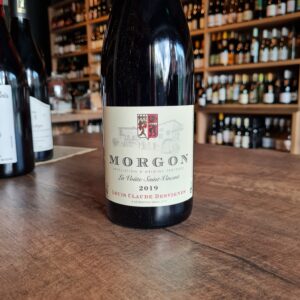 Louis-Claude Desvignes is a family estate that dates back to 1700. The Desvignes range is "La Voûte Saint Vincent", named for the vault or "voûte" of the old family house and for the patron saint of winemakers. It was Louis-Claude who began to turn the estate’s grapes into wine, and now with the reins handed over to his two sons Louis-Benoît and Claude-Emmanuelle Desvignes. It is a blend of certified-organic estate parcels totalling 4.5 hectares in the climat of Douby, which lies in the northeast corner of Morgon along the border of Fleurie. The La Voûte vines average 50 years old and are planted in Douby's typical sandy, decomposed-granite soils. Viticulture and vinification are consistent across all Desvignes wines. In the case of La Voûte, the parcels are all vinified separately.
Louis-Claude Desvignes is a family estate that dates back to 1700. The Desvignes range is "La Voûte Saint Vincent", named for the vault or "voûte" of the old family house and for the patron saint of winemakers. It was Louis-Claude who began to turn the estate’s grapes into wine, and now with the reins handed over to his two sons Louis-Benoît and Claude-Emmanuelle Desvignes. It is a blend of certified-organic estate parcels totalling 4.5 hectares in the climat of Douby, which lies in the northeast corner of Morgon along the border of Fleurie. The La Voûte vines average 50 years old and are planted in Douby's typical sandy, decomposed-granite soils. Viticulture and vinification are consistent across all Desvignes wines. In the case of La Voûte, the parcels are all vinified separately. -
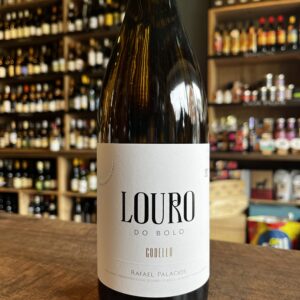 The best white wines of Spain are made of Godello from the region Valdeorras in Galicia. More and more this wine is can be seen in many wine lists across Ireland as its increasing popularity is par to the Albarino from Rias baixas or the Rueda's Verdejo. Rafael Palacios the maker of this wine comes from something of a winemaking dynasty. His father, uncle and brother are all highly regarded winemakers across Rioja, Priorat and other parts of the country. Rafael himself cut his teeth working on his father's Rioja estate, prior to training and working in Bordeaux and Coonawarra, South Australia. Rafa started this project in 2004 in the then little known region of Valdeorras, home of a few ancient plots of Godello vines. This grape variety was virtually extinct in Spain but Rafa and a few others realised its potential and extensive replanting of the variety began. The Louro is crafted from younger vines but is selected from plots that produce more age-worthy wines. Fermented with indigenous yeast and aged in used foudre, Louro showcases Rafa’s talent at balancing the minerality of the grape with the richness and texture of the élevage. Pair it with baked whitefish, bluefish, fish and vegetables, grilled fish, grilled whitefish, pasta with fish, poultry, rice with fish, roasted fish, roasted foods.
The best white wines of Spain are made of Godello from the region Valdeorras in Galicia. More and more this wine is can be seen in many wine lists across Ireland as its increasing popularity is par to the Albarino from Rias baixas or the Rueda's Verdejo. Rafael Palacios the maker of this wine comes from something of a winemaking dynasty. His father, uncle and brother are all highly regarded winemakers across Rioja, Priorat and other parts of the country. Rafael himself cut his teeth working on his father's Rioja estate, prior to training and working in Bordeaux and Coonawarra, South Australia. Rafa started this project in 2004 in the then little known region of Valdeorras, home of a few ancient plots of Godello vines. This grape variety was virtually extinct in Spain but Rafa and a few others realised its potential and extensive replanting of the variety began. The Louro is crafted from younger vines but is selected from plots that produce more age-worthy wines. Fermented with indigenous yeast and aged in used foudre, Louro showcases Rafa’s talent at balancing the minerality of the grape with the richness and texture of the élevage. Pair it with baked whitefish, bluefish, fish and vegetables, grilled fish, grilled whitefish, pasta with fish, poultry, rice with fish, roasted fish, roasted foods. -
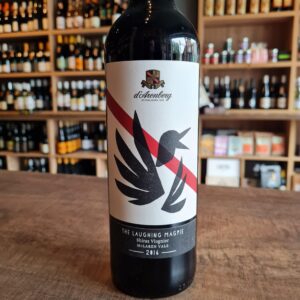 The Kookaburra is a native Australian bird famous for its distinctive laughing call, Chester's young daughters named them 'Laughing Magpies'. The Magpie plumage is black with a stripe of white feathers, representing McLaren Vale's first ever blend combining the (black) Shiraz and its white partner, Viognier. An enticing mix of primary fruit characters entwined with flowers, ginger and stone fruit. A rather dark appearance with a vivid purple hue suggesting a complex dry red. The nose is particularly intense, with peppery spice, hints of fragrant flower and perfume aromas, plus nectarines, apricots, ginger and herbs from the small parcel of viognier that the Shiraz is co-fermented with. On the palate the Shiraz is more dominant. There is some sweeter fruit characters like blackberry, blueberry and boysenberry. The palate is rich and generous and soft silky tannins. Would open 2 hours before serving and use a Decanter when possible. Enjoy this dry red wine from Australia with fillet of beef, dark meat dishes like goulash or the Asian classic Peking duck.
The Kookaburra is a native Australian bird famous for its distinctive laughing call, Chester's young daughters named them 'Laughing Magpies'. The Magpie plumage is black with a stripe of white feathers, representing McLaren Vale's first ever blend combining the (black) Shiraz and its white partner, Viognier. An enticing mix of primary fruit characters entwined with flowers, ginger and stone fruit. A rather dark appearance with a vivid purple hue suggesting a complex dry red. The nose is particularly intense, with peppery spice, hints of fragrant flower and perfume aromas, plus nectarines, apricots, ginger and herbs from the small parcel of viognier that the Shiraz is co-fermented with. On the palate the Shiraz is more dominant. There is some sweeter fruit characters like blackberry, blueberry and boysenberry. The palate is rich and generous and soft silky tannins. Would open 2 hours before serving and use a Decanter when possible. Enjoy this dry red wine from Australia with fillet of beef, dark meat dishes like goulash or the Asian classic Peking duck. -
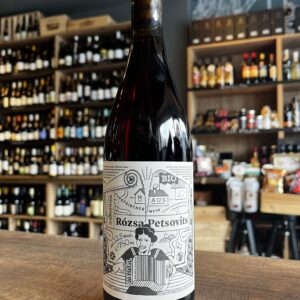 Rózsa Petsovits was born in 1921 in Horitschon, Hungary. In the same year Horitschon came to Austria. Just as the history of Burgenland is a history of German-speaking Hungary, so this wine tries to think without borders. Blaufänkisch grown on loam and Pinot Noir on limestone fom Austria mingle with Syrah and Zweigelt on gneiss from Hungary. A rosé to remember, dedicated to Franz Weninger's very active grandmother, Rozsa Petsovits. The perfect wine for summertime.
Rózsa Petsovits was born in 1921 in Horitschon, Hungary. In the same year Horitschon came to Austria. Just as the history of Burgenland is a history of German-speaking Hungary, so this wine tries to think without borders. Blaufänkisch grown on loam and Pinot Noir on limestone fom Austria mingle with Syrah and Zweigelt on gneiss from Hungary. A rosé to remember, dedicated to Franz Weninger's very active grandmother, Rozsa Petsovits. The perfect wine for summertime. -
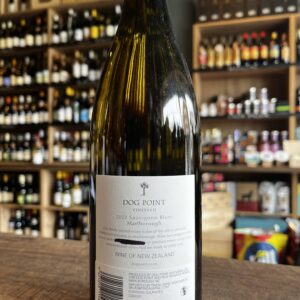
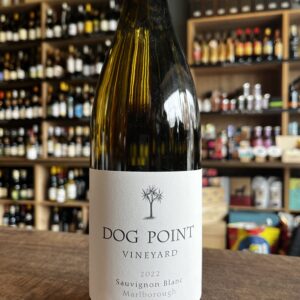 Dog Point Vineyard is New Zealand's largest certified organic vineyard by Biogro NZ. We are family owned and one of the oldest privately established vineyards, located on the hill slopes of the Southern Valleys of Marlborough, New Zealand. Marlborough is blessed with one of the sunniest and driest climates in New Zealand. The significant diurnal temperature range between cool nights and sunny days allows ideal conditions for the long slow ripening of grapes. Soils are crucial to the character of our wine. Most soils have been laid down within the last 14,000 years carved and eroded by glaciers in the high country and carried down to the coast by melt-water rivers. Older well-established vines are situated on free draining silty clay loams. This is supplemented with more recent plantings on closely planted hillside blocks on soils with a clay loam influence. Pair with fresh, simple seafood dishes especially oysters. Also compliments goat's cheese well
Dog Point Vineyard is New Zealand's largest certified organic vineyard by Biogro NZ. We are family owned and one of the oldest privately established vineyards, located on the hill slopes of the Southern Valleys of Marlborough, New Zealand. Marlborough is blessed with one of the sunniest and driest climates in New Zealand. The significant diurnal temperature range between cool nights and sunny days allows ideal conditions for the long slow ripening of grapes. Soils are crucial to the character of our wine. Most soils have been laid down within the last 14,000 years carved and eroded by glaciers in the high country and carried down to the coast by melt-water rivers. Older well-established vines are situated on free draining silty clay loams. This is supplemented with more recent plantings on closely planted hillside blocks on soils with a clay loam influence. Pair with fresh, simple seafood dishes especially oysters. Also compliments goat's cheese well -
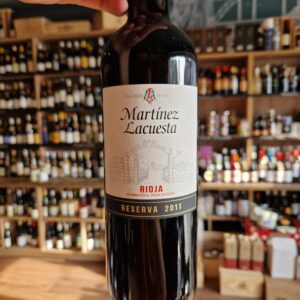 Bodegas Martínez Lacuesta was founded in 1895 in Haro by Félix Martínez Lacuesta. A winemaker, lawyer, politician and publicist, he was the first president of the National Association of Winegrowers and Wine Industries, as well as of the Rioja Wine Union. He was also one of the creators of the Regulating Board of D.O. Rioja, where he represented his fellow winemakers. The philosophy of this century-old winery is to produce the best wines from the best grapes. To do so, they have plots distributed throughout Rioja Alta, searching for the best vineyards and buying, up until this day, new plots to plant new vines. Martínez Lacuesta Reserva is a wine made from Tempranillo, Graciano and Mazuelo, from vineyards located at 450-600 metres of altitude. Their vines, of an average of 25 years old, are planted on clayey-calcareous soils. Suitable to accompany white or red meats, fishes with sauce, grilled meat or vegetables
Bodegas Martínez Lacuesta was founded in 1895 in Haro by Félix Martínez Lacuesta. A winemaker, lawyer, politician and publicist, he was the first president of the National Association of Winegrowers and Wine Industries, as well as of the Rioja Wine Union. He was also one of the creators of the Regulating Board of D.O. Rioja, where he represented his fellow winemakers. The philosophy of this century-old winery is to produce the best wines from the best grapes. To do so, they have plots distributed throughout Rioja Alta, searching for the best vineyards and buying, up until this day, new plots to plant new vines. Martínez Lacuesta Reserva is a wine made from Tempranillo, Graciano and Mazuelo, from vineyards located at 450-600 metres of altitude. Their vines, of an average of 25 years old, are planted on clayey-calcareous soils. Suitable to accompany white or red meats, fishes with sauce, grilled meat or vegetables -
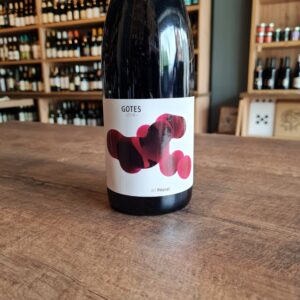 Gotes was the last to be incorporated into the Portal del Priorat's wine family, the Alfredo Arribas project in this denomination, and was envisioned to highlight the freshness of Priorat wines; gotes (drops) of freshness, like dewdrops. Don't expect to find in Gotes the more usual Priorat typicity, with profound maturity and intense minerality. Gotes reflects another type of Priorat wine, refined, in the French style (we mean 'French' as in Burgundy), with a fresh and floral profile. The typicity of Gotes is rooted in the countryside, in its notes of aromatic plants, and in that delightful warmth, because although fresh it is Mediterranean. Another special feature of Gotes is the polish and attention to detail it emits; it's an elegant wine; it has clearly been crafted by experts. If Gotes is refined on the nose, it's positively explosive on the palate! It grows and grows, with lots of volume and a very seductive sweetness and velvety texture. Gotes is fruit, but a very varied fruit cocktail: red fruits, black fruits, both fresh and jammy, the odd juicy stone fruit like mango (the Garnacha always leaves its mark) and fresh grapes that provide a citrusy touch. Ideal with dishes of a upper middle power taste. Will be excellent with a salad of figs and duck ham with Parmesan shavings. It will also be great taking with red meats, duck breast grilled or thigh kid with cider and soft alioli.
Gotes was the last to be incorporated into the Portal del Priorat's wine family, the Alfredo Arribas project in this denomination, and was envisioned to highlight the freshness of Priorat wines; gotes (drops) of freshness, like dewdrops. Don't expect to find in Gotes the more usual Priorat typicity, with profound maturity and intense minerality. Gotes reflects another type of Priorat wine, refined, in the French style (we mean 'French' as in Burgundy), with a fresh and floral profile. The typicity of Gotes is rooted in the countryside, in its notes of aromatic plants, and in that delightful warmth, because although fresh it is Mediterranean. Another special feature of Gotes is the polish and attention to detail it emits; it's an elegant wine; it has clearly been crafted by experts. If Gotes is refined on the nose, it's positively explosive on the palate! It grows and grows, with lots of volume and a very seductive sweetness and velvety texture. Gotes is fruit, but a very varied fruit cocktail: red fruits, black fruits, both fresh and jammy, the odd juicy stone fruit like mango (the Garnacha always leaves its mark) and fresh grapes that provide a citrusy touch. Ideal with dishes of a upper middle power taste. Will be excellent with a salad of figs and duck ham with Parmesan shavings. It will also be great taking with red meats, duck breast grilled or thigh kid with cider and soft alioli. -
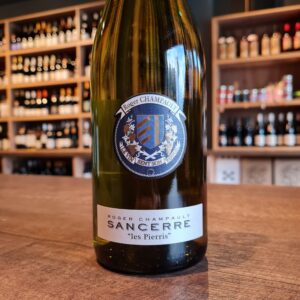 Five generations of traditional winemaking from the estate of Roger Champault, modern thermoregulation techniques, and carefully chosen soil matching, have produced a Cuvee that is subtle at first, like the rising of a summer breeze, building in its complexity with wispy herbal notes and abundant florals that dance across the taste buds like wind through an apple orchard. Delicate, yet so very alive. This wine drinks with a lovely, masterfully structured liveliness and sweet, concentrated finish.Thanks to its abundant fruitiness, it is suitable not only for seafood and crabs but also for more abundant fish dishes; fried salmon, pike perch etc. Also suitable for light meat, especially poultry dishes.Curious note, Sancerre Les Pierris 2008 wine was served at the wedding dinner of Princess Victoria and Daniel of Sweden.
Five generations of traditional winemaking from the estate of Roger Champault, modern thermoregulation techniques, and carefully chosen soil matching, have produced a Cuvee that is subtle at first, like the rising of a summer breeze, building in its complexity with wispy herbal notes and abundant florals that dance across the taste buds like wind through an apple orchard. Delicate, yet so very alive. This wine drinks with a lovely, masterfully structured liveliness and sweet, concentrated finish.Thanks to its abundant fruitiness, it is suitable not only for seafood and crabs but also for more abundant fish dishes; fried salmon, pike perch etc. Also suitable for light meat, especially poultry dishes.Curious note, Sancerre Les Pierris 2008 wine was served at the wedding dinner of Princess Victoria and Daniel of Sweden. -

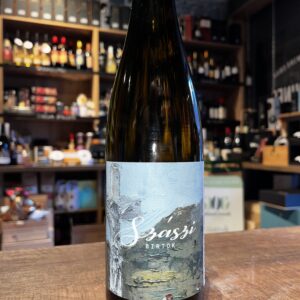 Szászi has one of the first organic certified vineyards in Hungary. The St. George's Hill is their top single vineyard dedicated to Olaszrizling aka. Welschriesling. Contrary to the name it has no genetical connection to the Rhein Valley Riesling. Olaszrizling is a neutral variety meaning that it is a good reflector of the basalt terroir. Its aromas are most commonly characterised by almond blossom and hazelnut. Olaszrizling wines are a real representation of the Lake Balaton feeling, as the variety can be found in almost every cellar on the north shore. Olaszrizling made in a really light, fresh neutral style is one of the great summer classics. This style of light Olaszrizling is the perfect accompaniment for summer barbecues and light salad or vegetable dishes. Olaszrizling can also demonstrate a more serious side with the right attention in the vineyards and winery. In this case, its flavours are accompanied by an oily, dense texture, greater depth and often a more mineral character. These premium Olaszrizlings are real foodie wines and also benefit from a few years of bottle age.
Szászi has one of the first organic certified vineyards in Hungary. The St. George's Hill is their top single vineyard dedicated to Olaszrizling aka. Welschriesling. Contrary to the name it has no genetical connection to the Rhein Valley Riesling. Olaszrizling is a neutral variety meaning that it is a good reflector of the basalt terroir. Its aromas are most commonly characterised by almond blossom and hazelnut. Olaszrizling wines are a real representation of the Lake Balaton feeling, as the variety can be found in almost every cellar on the north shore. Olaszrizling made in a really light, fresh neutral style is one of the great summer classics. This style of light Olaszrizling is the perfect accompaniment for summer barbecues and light salad or vegetable dishes. Olaszrizling can also demonstrate a more serious side with the right attention in the vineyards and winery. In this case, its flavours are accompanied by an oily, dense texture, greater depth and often a more mineral character. These premium Olaszrizlings are real foodie wines and also benefit from a few years of bottle age. -
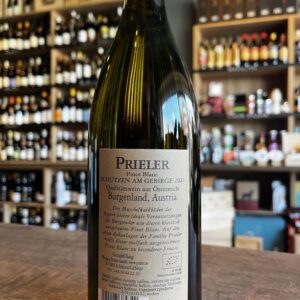
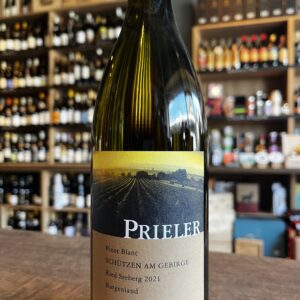 Old vines are the fortune of every vintner. They root deeply and lend their intrinsic potential a persistent voice. Pinot Blanc, also locally called Weissburgunder, has a long tradition in our region. My grandfather planted most of our vines in the limestone of the Seeberg site 60 years ago. A few were even planted by my grandfather over 90 years ago. It is my duty today to continue to tell the story that the two of them began.
Old vines are the fortune of every vintner. They root deeply and lend their intrinsic potential a persistent voice. Pinot Blanc, also locally called Weissburgunder, has a long tradition in our region. My grandfather planted most of our vines in the limestone of the Seeberg site 60 years ago. A few were even planted by my grandfather over 90 years ago. It is my duty today to continue to tell the story that the two of them began. -
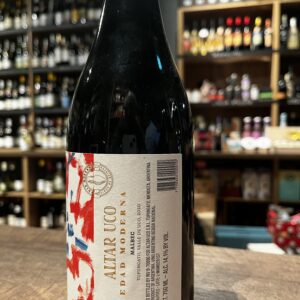
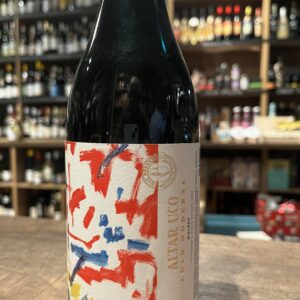 "The young and tender 2020 Edad Moderna Malbec feels a bit raw and wild, showing the character of the place. It is a bit riper, reflecting a warmer and drier year, showing notes of licorice and black cherries. It's a bit chewy with faint rusticity, and it developed balsamic nuances with time in the glass"
"The young and tender 2020 Edad Moderna Malbec feels a bit raw and wild, showing the character of the place. It is a bit riper, reflecting a warmer and drier year, showing notes of licorice and black cherries. It's a bit chewy with faint rusticity, and it developed balsamic nuances with time in the glass" -
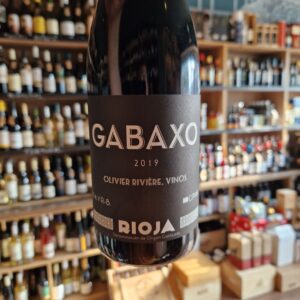
Rioja Gabaxo Olivier Riviere Biodynamic Wine, Wild yeast, French oak Maturation, full bodied but beautifully fresh and balanced. No new oak in Gabacho, but loads of classy Rioja character and sheer drinkability! Gabacho does see some wood, a small amount of old french barrels are used for ageing up to a year. This adds no flavour but helps to soften the wine slightly. This really is lovely stuff, rich but very fresh and balanced red wine with a touch of the dark and brooding about it and a touch of the animal too. It benefits from decanting and also from good bottle ageing. Try it, it will change your mind about Rioja
-
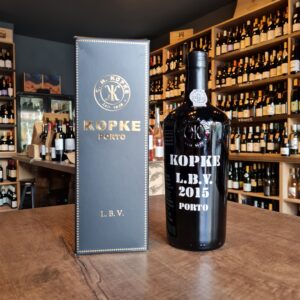 The wine owes its name to the port city of Porto, but comes from the Douro Valley. Here you will find one of the most spectacular wine landscapes in the world with terraced vineyards on steep slopes. It is scorching hot in summer, freezing cold in winter. The Douro Valley was already demarcated in 1756, making it the oldest regulated area of origin in the world. Port itself is a fortified wine. By interrupting the fermentation by adding wine alcohol, the wine retains its residual sugars and also gets its relatively high alcohol percentage. Port does not stand for a single wine, but for a whole series of wines. Wines with very different styles and tastes due to differences in the blending and aging of the base wines. In 1636 Nicolau Kopkë settled in Portugal as 'consul general' (a kind of representative) of the Hanseatic League, a partnership between merchants and cities, during the Middle Ages. Two years later, the first bottles of wine were shipped to Northern Europe. And when Nicolau bought a farm in the Douro in 1781, he changed from buyer to producer. Port wine soon became the focus of the company. Kpke now is one of the oldest Port Wine House. Recognized by the variety and distinction of its Ports, Kopke represents in XXI century a symbol of quality and prestige. LBV stands for Late Bottle Vintage and is the result of single year's harvest of superior quality, aged in oak Vats. Balancing the intensity of flavours, the Late Bottled Vintage Port is the ideal choice to serve with main courses of meat, like filet mignon encrusted four peppers and veal cutlet with Bérnaise sauce. Its versatility knows no borders, being perfect to combine with an exuberant cheesecake of chocolate mint, a pear and chocolate mille-feuille or simply to enjoy with cheeses of medium intensity.
The wine owes its name to the port city of Porto, but comes from the Douro Valley. Here you will find one of the most spectacular wine landscapes in the world with terraced vineyards on steep slopes. It is scorching hot in summer, freezing cold in winter. The Douro Valley was already demarcated in 1756, making it the oldest regulated area of origin in the world. Port itself is a fortified wine. By interrupting the fermentation by adding wine alcohol, the wine retains its residual sugars and also gets its relatively high alcohol percentage. Port does not stand for a single wine, but for a whole series of wines. Wines with very different styles and tastes due to differences in the blending and aging of the base wines. In 1636 Nicolau Kopkë settled in Portugal as 'consul general' (a kind of representative) of the Hanseatic League, a partnership between merchants and cities, during the Middle Ages. Two years later, the first bottles of wine were shipped to Northern Europe. And when Nicolau bought a farm in the Douro in 1781, he changed from buyer to producer. Port wine soon became the focus of the company. Kpke now is one of the oldest Port Wine House. Recognized by the variety and distinction of its Ports, Kopke represents in XXI century a symbol of quality and prestige. LBV stands for Late Bottle Vintage and is the result of single year's harvest of superior quality, aged in oak Vats. Balancing the intensity of flavours, the Late Bottled Vintage Port is the ideal choice to serve with main courses of meat, like filet mignon encrusted four peppers and veal cutlet with Bérnaise sauce. Its versatility knows no borders, being perfect to combine with an exuberant cheesecake of chocolate mint, a pear and chocolate mille-feuille or simply to enjoy with cheeses of medium intensity. -
Out of stock
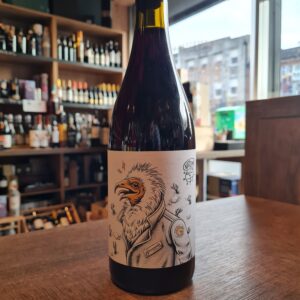 Ricardo Alves and Frederico Machado visited Bemposta for the first time together in 2017. They were on the Portuguese back roads in the Parque Natural das Arribas do Douro, with its wealth of ancient, indigenous and largely forgotten grapevines chaotically perched on the extreme slopes on the Douro river gorge, when they came upon the perfect location for their life project, the place to which they would commit their youth. They set out to rediscover and revitalize an ancient wine culture whose local home winegrowers have just barely kept the faint bloodline of their vinous history from extinction. Trás-os-Montes is a large, but not too well known, wine region of north eastern Portugal (Translation: behind the Mountains), is where the Arribas Wine Company are based and both are very passionate have been making some very interesting wines. Saroto Tinto is made from a small, old parcel of vines comprised of old-fashioned red and white Douro varieties. The resultant wine is full of wild forest fruit, lots of berries with a kick of natural sourness. Plenty of fresh acidity adds juiciness and balances the rustic, grippy tannins, making for quite a light red. Earthy minerality adds extra complexity and the finish is long and moreish. Its bottled unfined and unfiltered so may have natural sediment in the bottle.
Ricardo Alves and Frederico Machado visited Bemposta for the first time together in 2017. They were on the Portuguese back roads in the Parque Natural das Arribas do Douro, with its wealth of ancient, indigenous and largely forgotten grapevines chaotically perched on the extreme slopes on the Douro river gorge, when they came upon the perfect location for their life project, the place to which they would commit their youth. They set out to rediscover and revitalize an ancient wine culture whose local home winegrowers have just barely kept the faint bloodline of their vinous history from extinction. Trás-os-Montes is a large, but not too well known, wine region of north eastern Portugal (Translation: behind the Mountains), is where the Arribas Wine Company are based and both are very passionate have been making some very interesting wines. Saroto Tinto is made from a small, old parcel of vines comprised of old-fashioned red and white Douro varieties. The resultant wine is full of wild forest fruit, lots of berries with a kick of natural sourness. Plenty of fresh acidity adds juiciness and balances the rustic, grippy tannins, making for quite a light red. Earthy minerality adds extra complexity and the finish is long and moreish. Its bottled unfined and unfiltered so may have natural sediment in the bottle.



